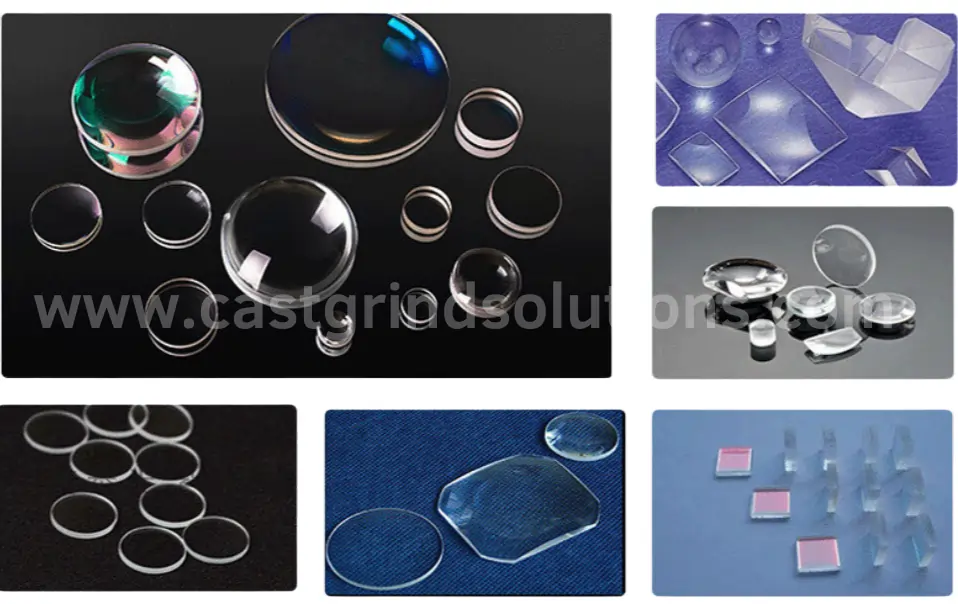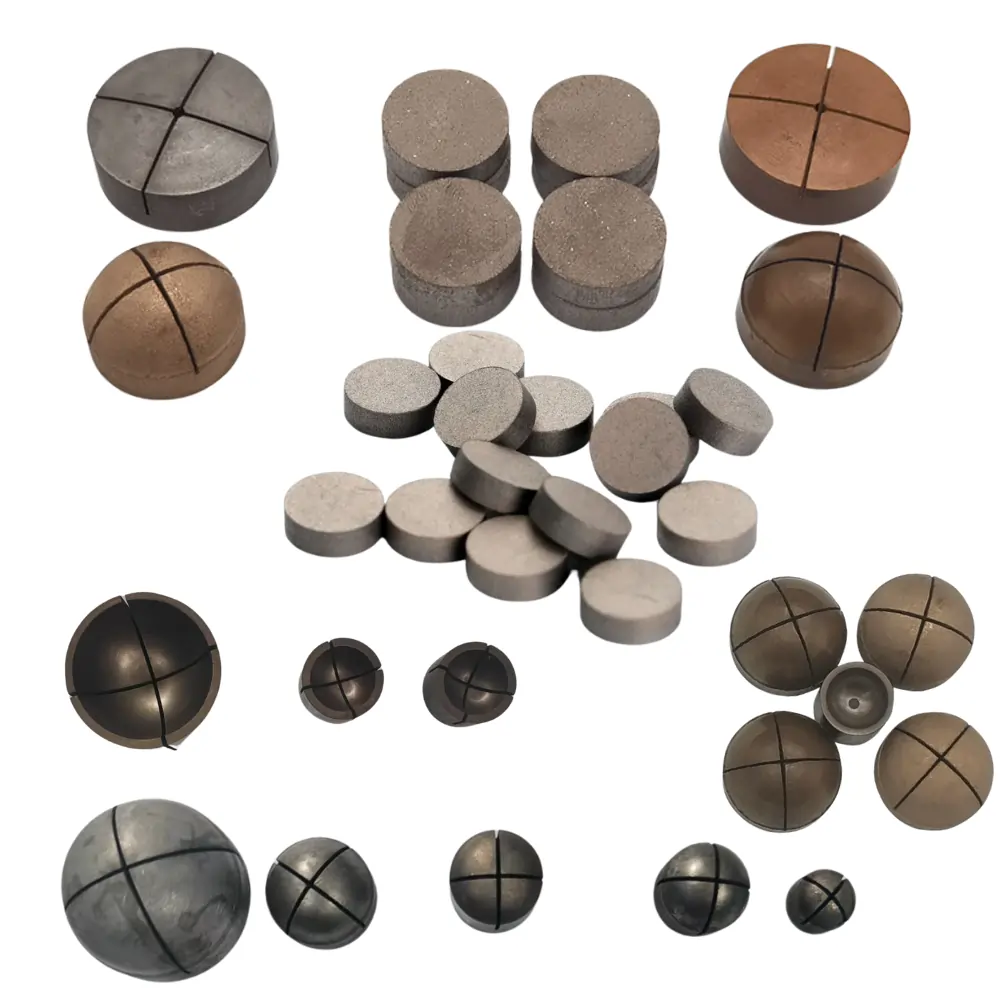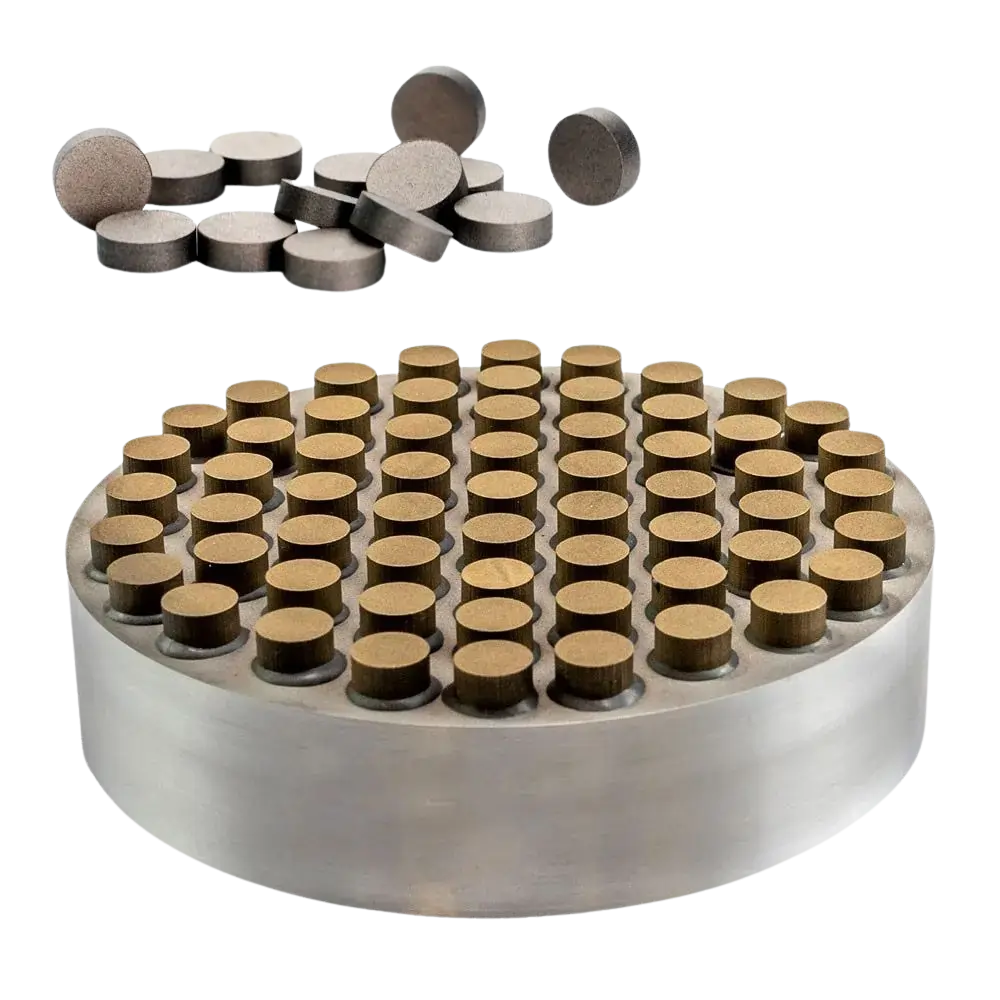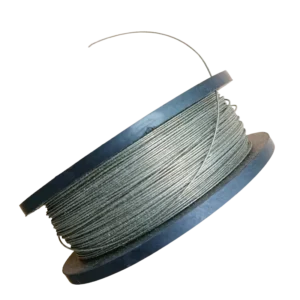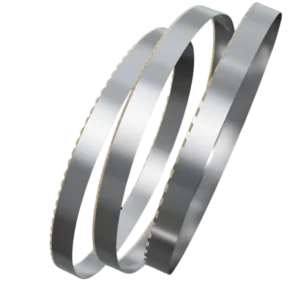Diamond Pellets
Available in resin bond, metal bond and vitrified bond types.
Diamond Pellets Size: diameter: 3-20mm; thickness: 3-15mm
Exceptional good at precision finishing on optical glass, ceramic,and hard material
Custom service and professional guide offering
Description
Diamond pellets are crucial grinding tools primarily composed of diamond abrasives, bonding agents, and other fillers. These pellets are produced through pressing and sintering processes and are widely used for rough grinding, fine grinding, and polishing hard and brittle materials like optical glass, lenses, and ceramics. Their exceptional grinding performance and stability make them essential in precision machining applications.
Structure and Characteristics of Diamond Pellet
Structure:
Diamond pellets typically have a cylindrical shape with diameters ranging from 4mm to 15mm and heights between 3mm and 6mm. They consist of two main parts:
- Abrasive Layer: The working section of the pellet, composed of diamond abrasives, bonding agents, and fillers.
- Non-Abrasive Layer (Optional): A transitional support layer that provides structural stability. Some diamond pellets are made entirely of abrasive material without a transition layer.
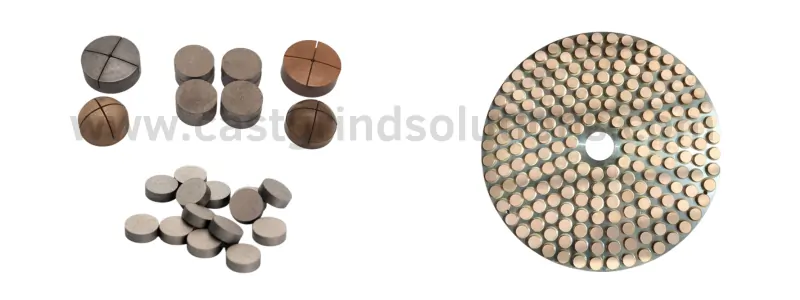
Key Characteristics of Diamond Pellets
- High Hardness & Wear Resistance: Diamond, being the hardest known material, allows for high grinding pressure without significant wear.
- Excellent Thermal Conductivity: Effectively dissipates heat to prevent deformation or burns on the workpiece.
- High Grinding Efficiency: Enables rapid material removal, improving processing speed.
- Stable Performance: Ensures consistent grinding performance with minimal abrasive loss or bonding failure.
Manufacturing Process of Diamond Pellets
Diamond pellets are typically bonded to grinding tool disks. Cast Grind Solutions offers standalone diamond pellets with specialized adhesive or pre-arranged grinding plates with embedded diamond pellets.
The manufacturing process of diamond pellets is similar to that of metal-bonded, resin-bonded, and ceramic-bonded diamond tools. However, due to the fine and unique shape of the abrasive grains, higher precision manufacturing conditions are required, necessitating a clean workspace to prevent contamination by coarse abrasives.
During operation, diamond pellets are used with grinding fluids to enhance performance and extend tool life.
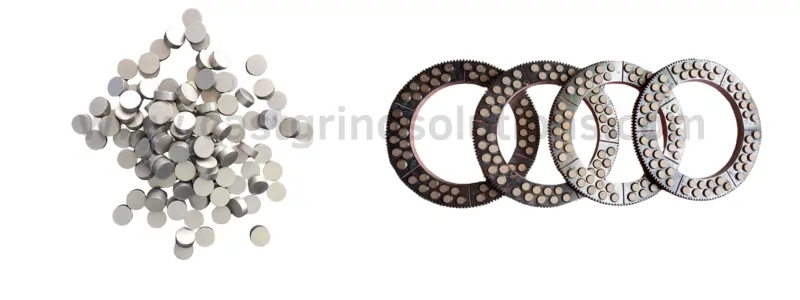
Technical Specifications
Product Specifications
Diamond Pellets Diameter: 3-20mm
Thickness:3-15mm
Surface Curvature: Customizable
Diamond Grit Size Range: 400#-10000#
Diamond Concentration: 50%, 75%, 100%, 125%
Bond Types: Resin, Metal, Ceramic
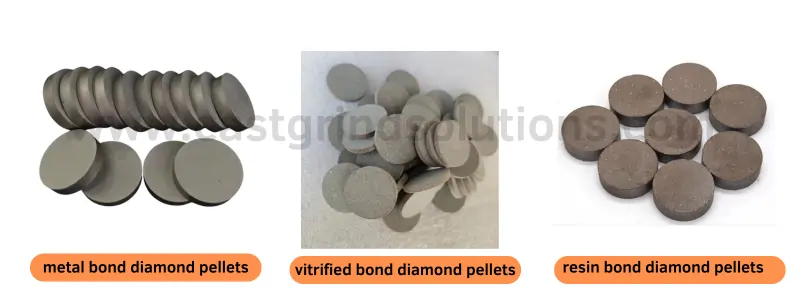
Diamond Pellets for Optical Glass
Diamond pellets are essential tools in optical cold processing, glass grinding, and fine grinding applications. They ensure high surface precision and smoothness for optical components like lenses for telescopes, cameras, and microscopes.
Types of Diamond Pellets Based on Shape:
Curved Diamond Pellets (R-Value): Used for spherical glass grinding.
Available in resin and metal bonds:
Metal Bond: Suitable for rough grinding (80#-1500# grit size range).
Resin Bond: Suitable for fine grinding (1500#-1800# grit size range).
Flat Diamond Pellets:Used for flat glass grinding.
Also available in resin and metal bonds:
Metal Bond: For rough grinding (80#-1500# grit size range).
Resin Bond: For fine grinding (1500#-1800# grit size range).
Commonly Processed Glass Materials
Diamond pellets are used for precision machining of various optical glass types, including: S-LAH66, S-LAH55, S-LAH58, S-LAH60, S-LAH64, TAFD5, TAFE30, LAC8, TAC8, BSC7, BAC4, BACD, E-F, S-BSL7, S-BSM, A-BAL, S-TIM, K9, S-TIH, S-FTM, E-FD1FD60, FD110, E-FDS1, FDS90, FCD1, PCD4, ADC1, S-FPL, S-PHM, FC5, S-FSL5, and more.
Choosing the Right Diamond Pellet for Optical Fine Grinding
Key Factors:
Grit Size Selection:
Fine grinding acts as a transition between rough grinding and polishing.
Must effectively remove rough grinding marks while ensuring fine scratches can be polished away.
Standard optical components require metal-bonded 1200#-1500# grit for a roughness (Ra) of 0.16-0.32μm before polishing.
High-precision lenses may require two fine grinding steps:
Step 1: 1000#-1200# metal bond
Step 2: 1500#-1800# resin bond (Ra < 0.10μm)
Size Selection:
Determined by lens curvature and grinding plate area.
Coverage Ratio:
Impacts cooling efficiency and grinding performance.
Flat & large curvature lenses: Use low coverage (20%-30%) with denser pellet placement at edges for better cutting pressure.
Small curvature lenses: Use higher coverage (30%-40%) to maintain tool shape stability.
Cast Grind Solutions – Diamond Pellet Advantages
Cast Grind Solutions specializes in high-precision diamond grinding tools with over 20 years of expertise in the optical industry. For any inquiries regarding optical glass grinding and polishing, contact us for professional support and solutions.
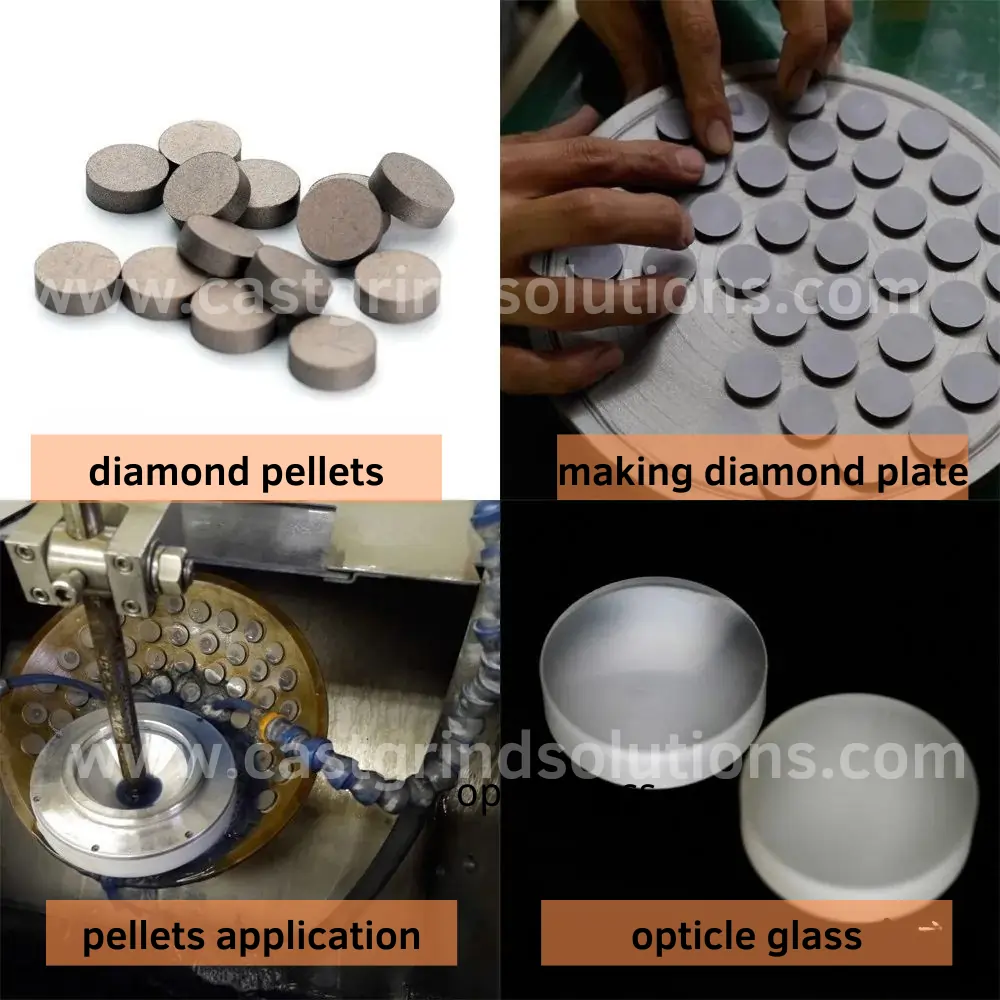
Features
Classification & Selection Criteria of Diamond Pellets
Diamond pellets vary based on grit size, hardness, bonding material, and concentration. Selection depends on workpiece material, hardness, precision requirements, and processing conditions.
Selection Factors:
- Abrasive Grit Size: Finer grit results in a smoother surface but reduces efficiency. Balancing surface quality and grinding speed is essential.
- Hardness: Determines the ease of abrasive grain detachment during grinding. Must be matched to workpiece hardness and processing requirements.
- Bonding Agent: Affects grinding performance and stability. Common types include resin, metal, and ceramic bonds.
- Concentration: Refers to the proportion of diamond abrasives in the pellet. Higher concentrations are used for coarser grits, while lower concentrations suit finer grits.
Applications & Advantages
Diamond pellets are widely used in processing optical glass, lenses, ceramics, and other hard brittle materials. Their superior hardness, wear resistance, and thermal conductivity ensure efficient and precise grinding. They enhance productivity, improve surface quality, and offer long service life, reducing processing costs.
Diamond Pellets Usage Precautions
To ensure optimal performance, consider the following:
Select the appropriate model and specifications based on material and processing requirements.
Control grinding parameters (pressure, speed, feed rate) for stable and safe operation.
Regular inspection and replacement of worn-out pellets to maintain grinding quality and efficiency.
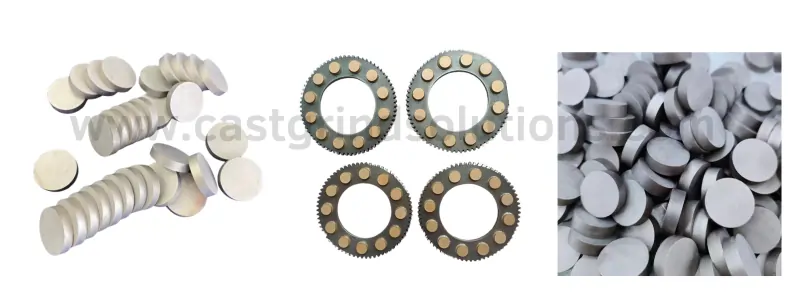
Application
Resin Bond Diamond Pellets:
Resin diamond pellets exhibit excellent elasticity and toughness, allowing them to adapt to different surface shapes and curvatures during the grinding process.
Resin diamond pellets are primarily used for the precise grinding and polishing of materials such as optical glass, ceramics, and hard alloys. They are particularly suited for the processing of optical lenses, ensuring that the lens surfaces achieve extremely high smoothness and precision.
Sintered (metal bond)Diamond Pellets:
Sintered diamond pellets have high hardness and wear resistance, capable of withstanding significant grinding pressure and friction. They maintain shape stability and are not easily deformed, making them suitable for applications requiring high grinding precision.
Sintered diamond pellets are mainly used for grinding and polishing hard materials such as magnetic materials, tungsten steel, glass, and sapphire. They also have broad applications in the field of precision mechanical processing, including mold making and automotive parts manufacturing.
Vitrified Bond Diamond Pellets:
Vitrified bond diamond pellets offer good thermal stability, maintaining stable grinding performance at high temperatures. They are suitable for high-precision and high-efficiency grinding processes, ensuring that the workpiece surfaces achieve very high smoothness and precision.
Vitrified diamond pellets are primarily used for the precise grinding and polishing of materials such as ceramics, optical glass, and hard alloys. They also have extensive applications in semiconductor manufacturing, optical instrument production, and other fields.
